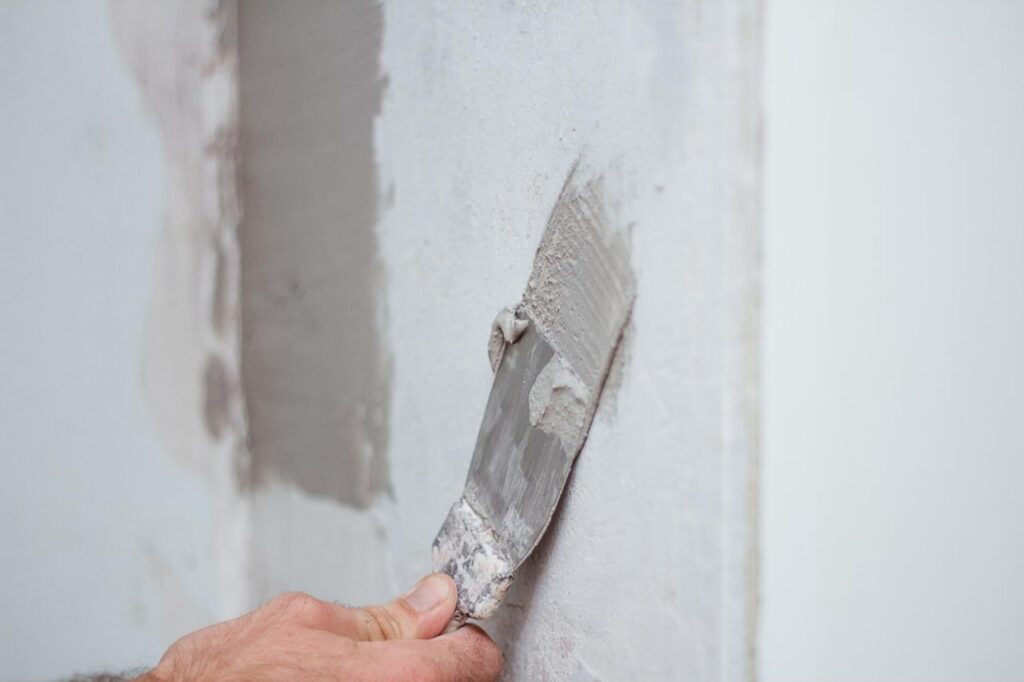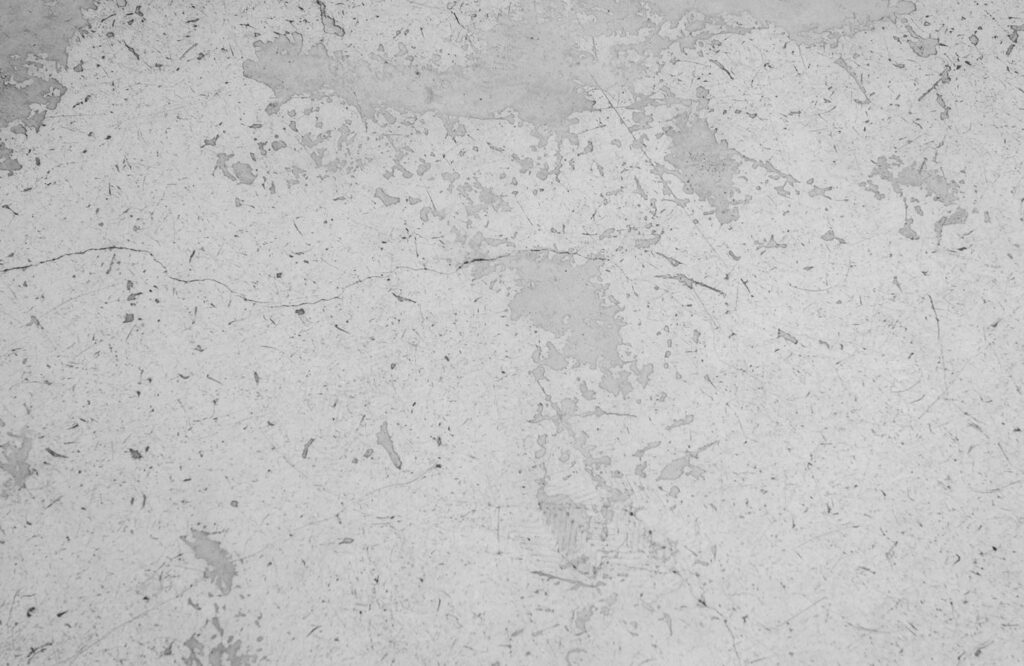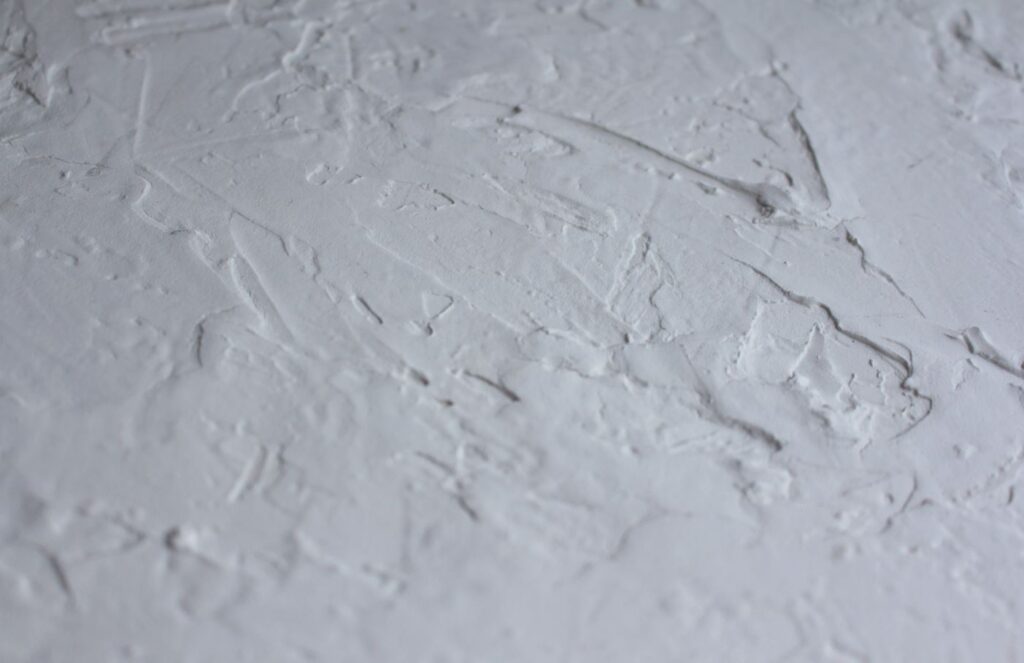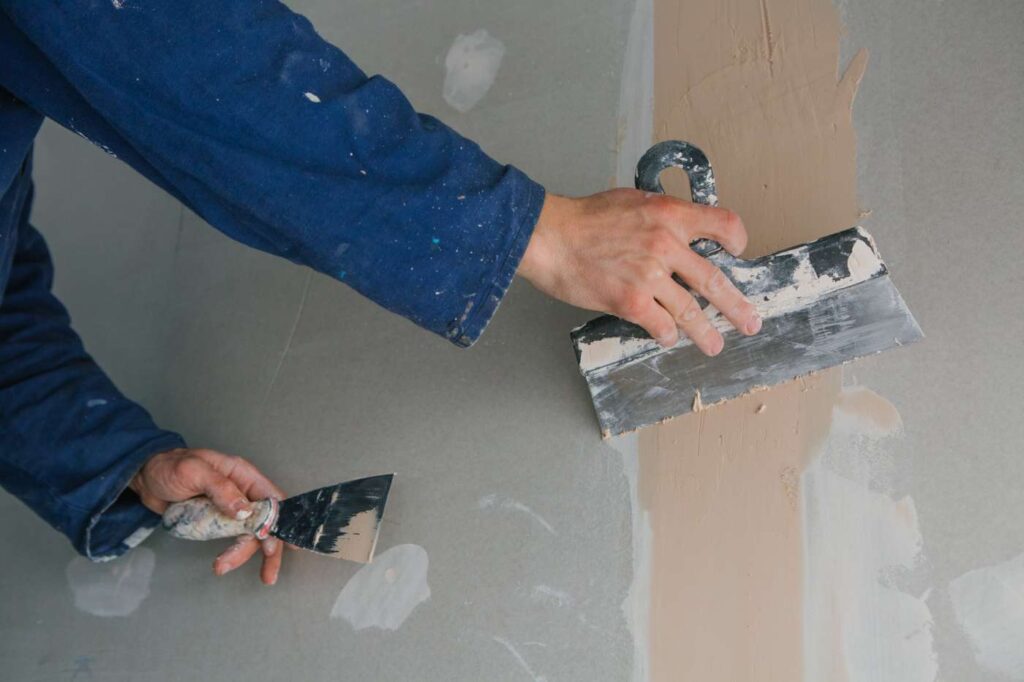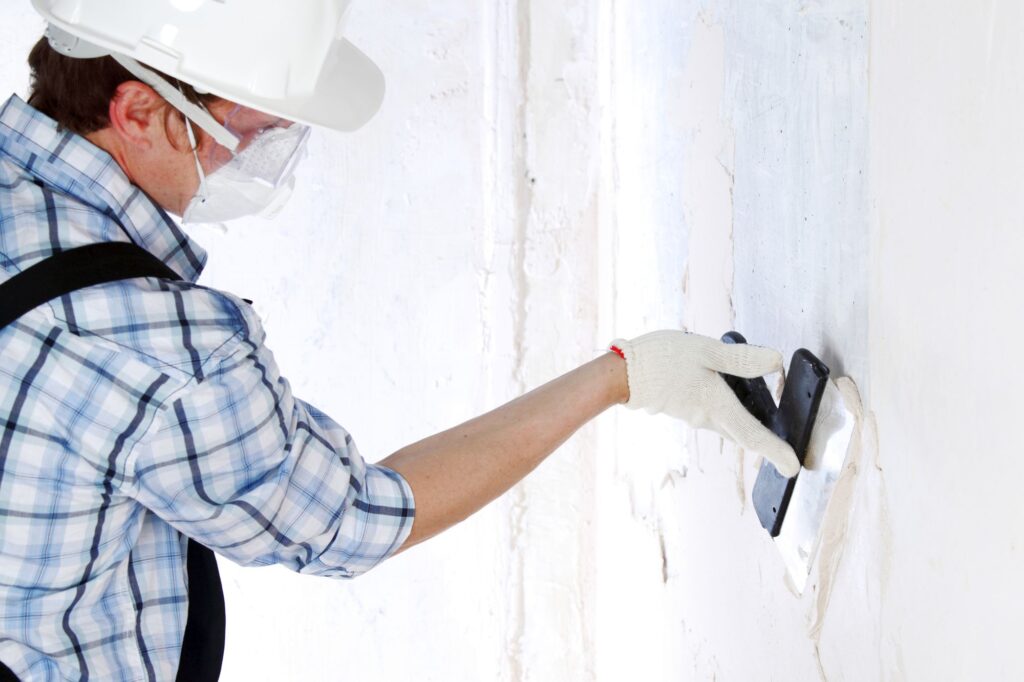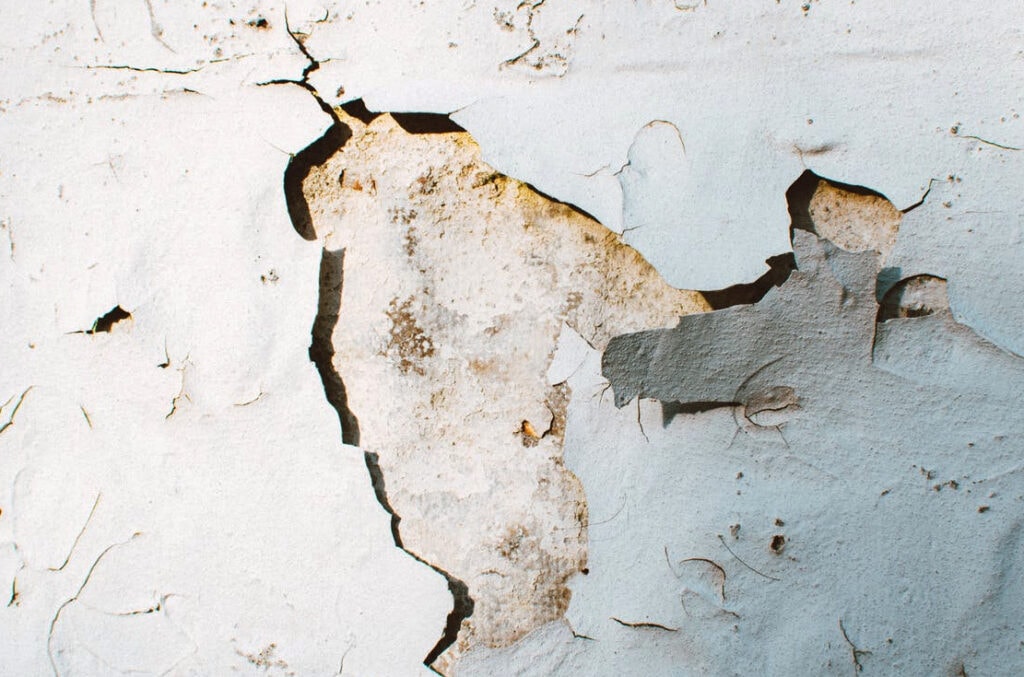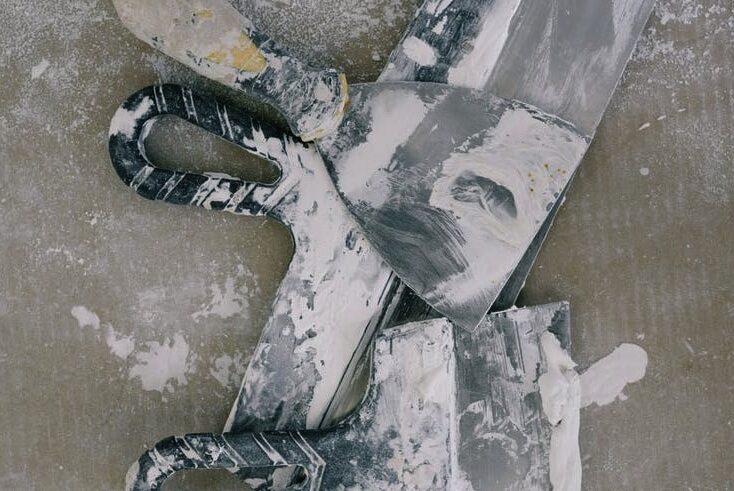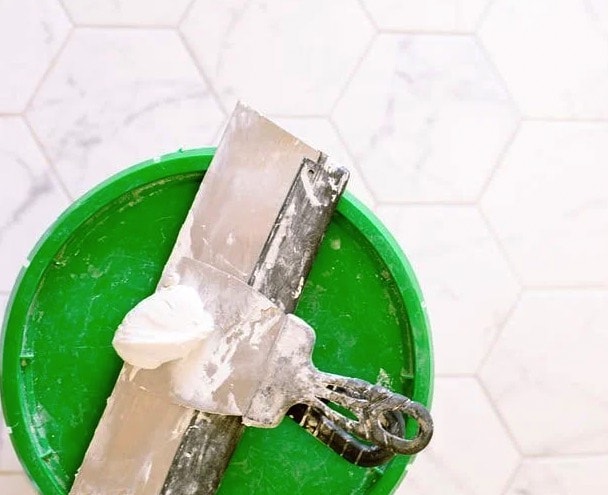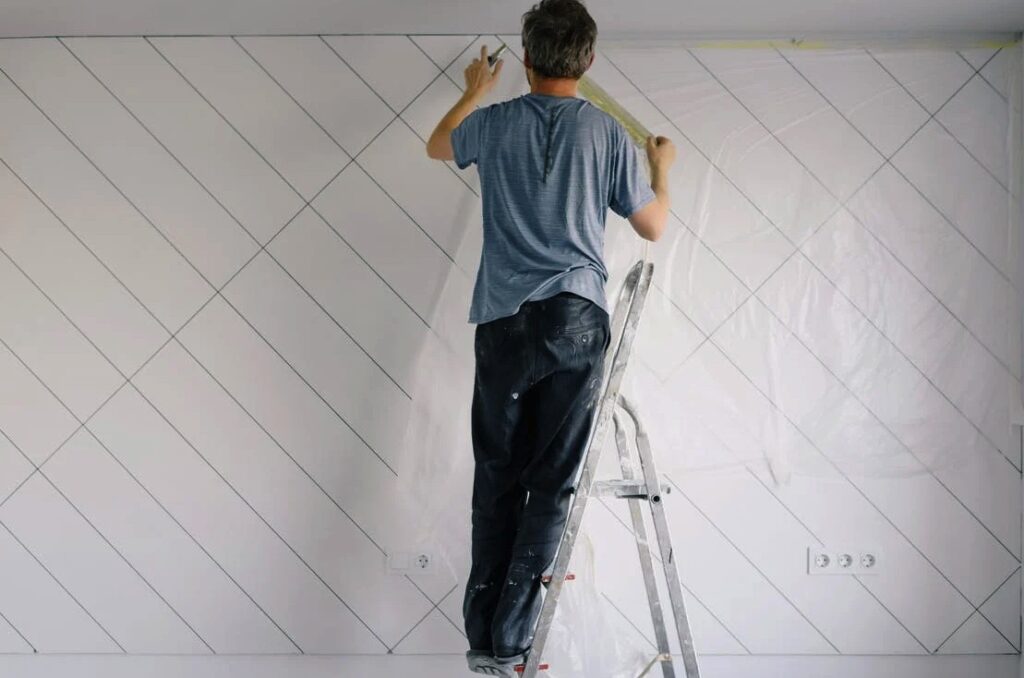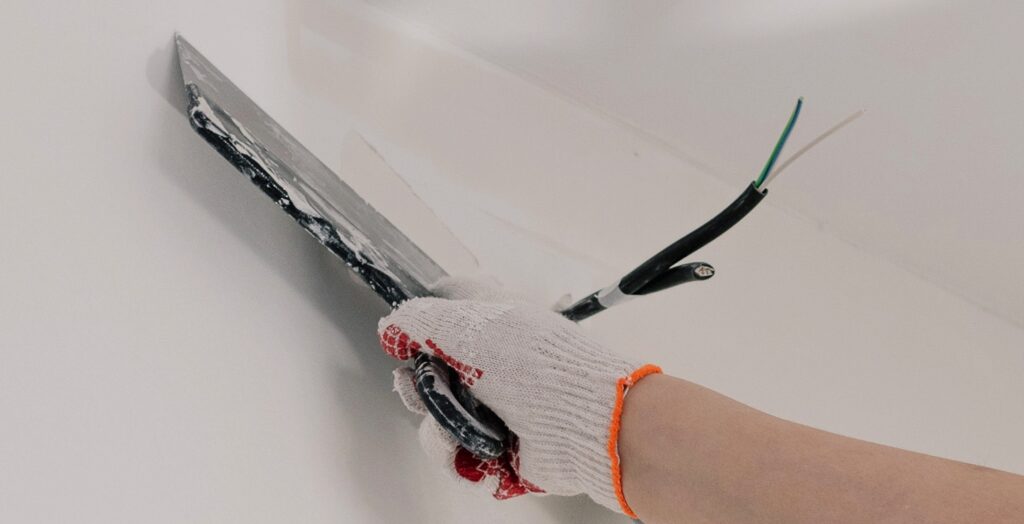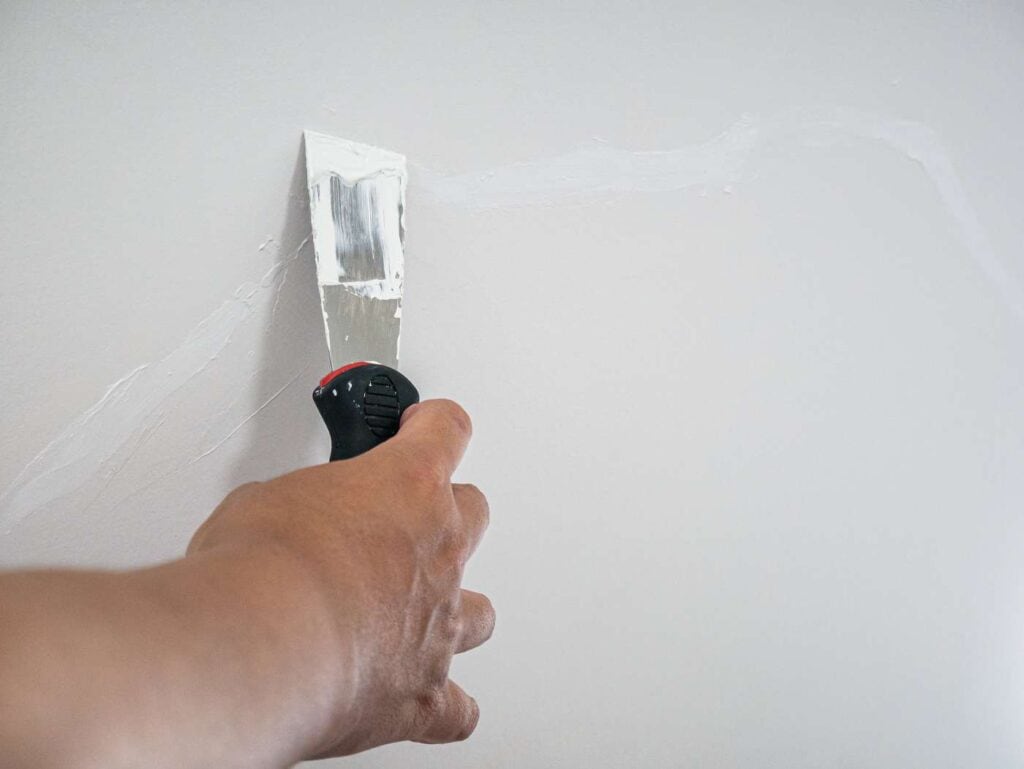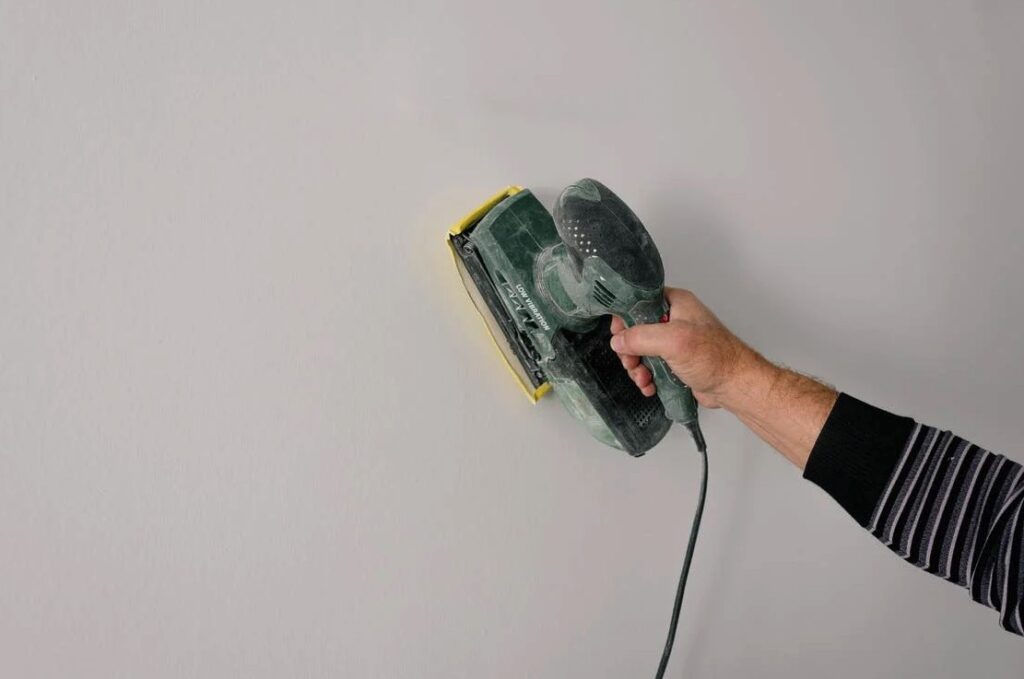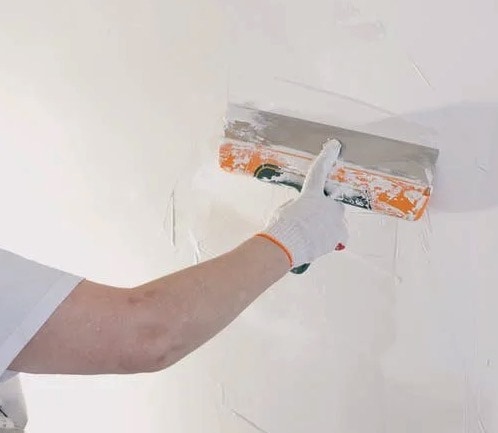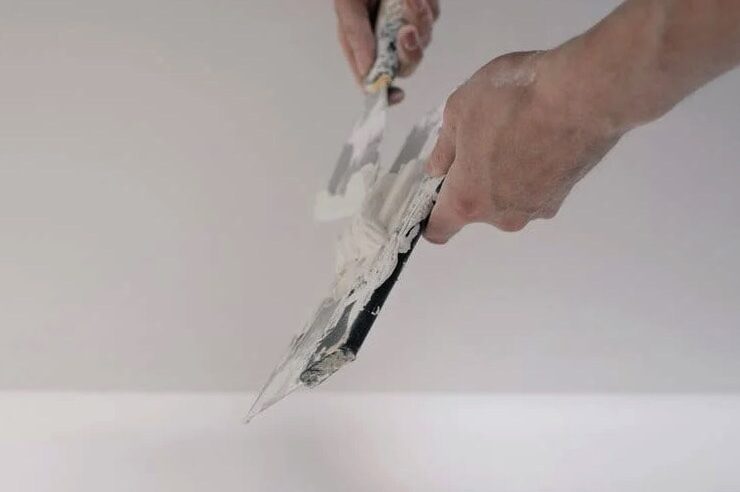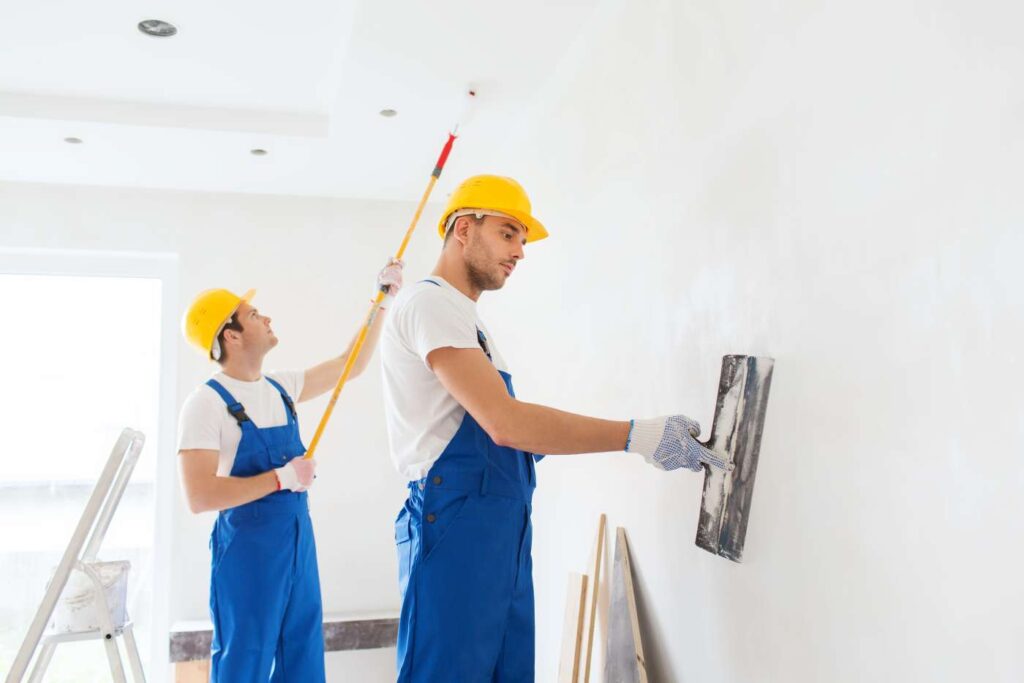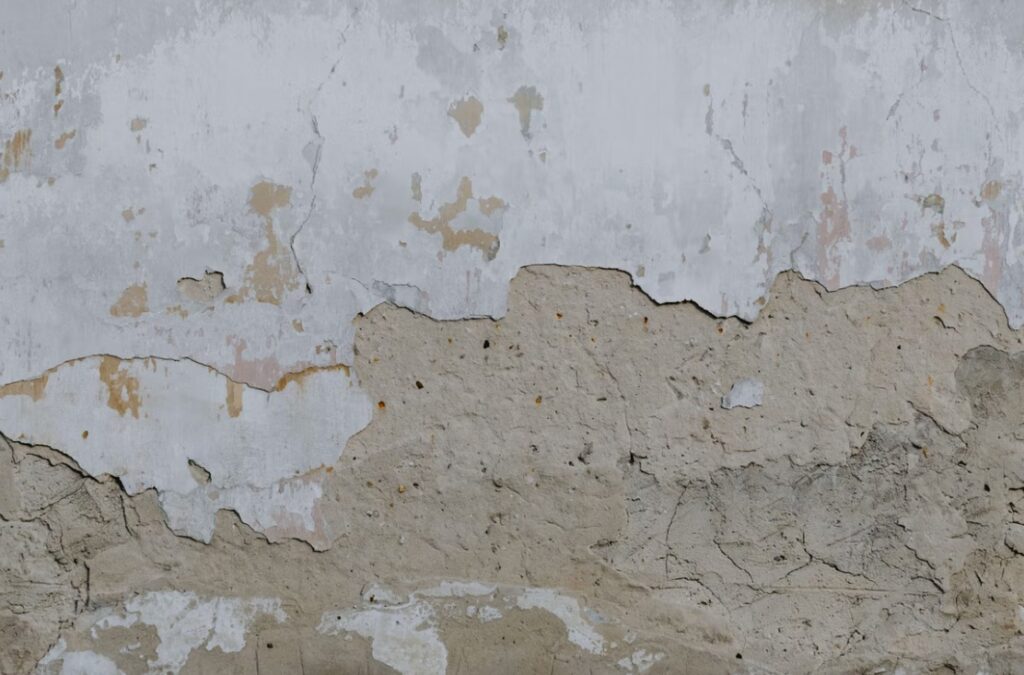Covering walls with plaster is called plastering. Plastering is mostly done to prevent wall deterioration and to create a smooth finishing surface.
Plaster is a polymer made of cement, sand, and water.
If the plaster is good, there shouldn't be any cracking or change in volume after drying. It adds to the building's resilience and longevity in adverse weather conditions. Both interior and exterior walls can be plastered.
You can adjust the cement mortar mixture for plastering according to your needs. Listed below are the many varieties of plastering that can be found in a structure.
Here, we'll review the benefits and drawbacks of various plastering techniques.
Gypsum Plaster
The white powder, known as gypsum plaster, is a paste-making ingredient that hardens over time when combined with water. Smoothing walls and ceilings or making ornamental shapes are common uses for it.
Advantages Of Gypsum Plaster
Easy To Shape and Apply
Gypsum plaster is ideal for ornamental reasons since it applies smoothly to walls and ceilings and can be readily shaped into various forms.
Quick Setting Time
Compared to other plasters, it sets and dries more quickly, so the building may go faster.
Smooth Finish
After it dries, it produces a smooth, velvety finish that is typically sand-free, giving the impression of excellent quality with little work.
Non-Combustible Material
Gypsum plaster, being non-combustible, can give a layer of protection to buildings by reducing the rate at which flames spread.
Resistant To Mildew and Mold
Indoor areas are kept healthier, and maintenance work linked to moisture damage is reduced since it does not foster the growth of fungi or germs.
Disadvantages Of Gypsum Plaster
Not Suitable For Damp Areas
Plaster made of gypsum will only survive for a short time in damp environments, such as basements or bathrooms. It is susceptible to injury and water absorption.
Can Crack Over Time
Because it doesn't bend very easily, gypsum plaster can break with time. If your house settles or shifts, it will not be able to follow.
Slower Drying Process
It is necessary to wait longer to paint or finish the wall when using gypsum plaster since it dries more slowly than other varieties.
Poor Impact Resistance
Because it is not extremely resistant to knocks or bumps, gypsum plaster walls are easily dented or holed if anything touches them.
Limited Outdoor Use
Weather conditions like sun, rain, and wind can damage gypsum plaster, reducing longevity. Consequently, it is not recommended for use on exterior walls.
Cement Plaster
For a smooth finish on both the inside and outside of masonry structures, a mixture of appropriate Portland cement, sand, plaster, and water is used as cement plaster. Gypsum plaster is sometimes used as a finishing coat on the inside.
To provide a smooth surface on brick surfaces, inside and out, cement plaster is typically applied using an adequate quantity of sand (fine aggregate), portland cement, and water.
Advantages Of Cement Plaster
Using cement plaster has several benefits, including the following:
- Plastering walls with cement creates a long-lasting covering that prevents water from seeping.
- The most efficient type of plaster is cement plaster, as opposed to lime plaster.
- You can use cement plaster on the inside and outside of a wall.
- To some extent, cement plaster can withstand chemical assaults and vegetation growth.
- Cement plaster is also fireproof.
- The acoustic qualities of cement plaster are second to none.
Disadvantages Of Cement Plaster
There are a few drawbacks to cement plaster, even if it has many advantages. Among them are:
- A proper plaster seal requires both pre- and post-curing.
- Due to its poor flexural and tensile strength, cement plaster is prone to cracking.
- A smooth surface is not suitable for applying cement plaster.
- Plastering uses much water, which can be a huge problem in areas without enough water sources.
- Putting up cement plaster is a labour-intensive process that might drive up the price of the job.
Lime Plaster
The three main ingredients in lime plaster are sand, water, and lime, often non-hydraulic hydrated lime, which goes by several names: air lime, high calcium lime, slaked lime, and lime plaster. Horsehair and pozzolanic additions were common ingredients in ancient lime plaster, which helped to fortify the material and shorten the working time.
An equal part of sand and lime is ground in a mortar mill and then mechanically mixed with water to form a paste of the desired consistency.
Lime plaster's shrinkage, strength, porosity, and adhesiveness are all modulated by the sand proportions; fine sand is ideal for this purpose.
Advantages Of Lime Plaster
Breathability and Flexibility
The substance lime plaster is both very malleable and porous. Its versatility makes it an ideal material for covering a wide range of surfaces, including brick, stone, and wood. A long-lasting and aesthetically pleasing finish is assured by its elasticity, which allows it to tolerate movement inside the structure without cracking.
Because it is permeable, lime plaster helps keep the air in your home healthy by letting moisture evaporate. Older structures benefit greatly from this breathable material because they need a well-balanced moisture control system to avoid damp issues.
Longevity and Durability
Lime plaster has several advantages over other materials, including superior resistance to wear and a lengthy lifespan. Lime plaster is already quite resistant to shrinking and breaking; adding fibres like hair makes it even more so.
In addition, the lime used to make the plaster can absorb some of the CO2 released when it is made. Over time, allowing it to thicken and grow more resilient. Your home's individuality and beauty will be preserved for decades to come with lime plaster if you take care of it properly.
Dampness and Moisture Control
The capacity of lime plaster to regulate the amount of moisture in a building is a major benefit. Lime plaster improves indoor air quality and decreases the likelihood of mould growth due to its porous, absorbent nature.
Also, unlike other plaster options like gypsum, clay, or cement, lime plaster does not dry up or dissolve when exposed to water. As a result, lime plaster is a great option for homes that need waterproofing, as it will prolong the life of your home and keep it structurally sound.
Eco-Friendly
You can do your part for the environment by plastering your walls with lime. To start, compared to plasters made from cement, the production of lime plaster results in fewer greenhouse gas emissions. This material's natural permeability reduces heating and cooling costs and your home's environmental impact by requiring less energy to maintain humidity and temperature.
Utilising lime plaster is a conscientious and eco-conscious choice that assists in preserving historic buildings' distinct history and personality while reducing resource use.
Disadvantages Of Lime Plaster
Shrinkage and Cracking
While curing, lime plaster has the potential to split and shrink. This is particularly the case because it takes longer for non-hydraulic lime to dry. Plaster can shrink due to evaporation when it dries, resulting in surface fissures.
In most cases, you can keep these cracks at bay during the first two weeks following application by misting the surface often with water. If you hire a professional lime plasterer, they will either take care of it for you or provide instructions on maintaining the plaster while it sets.
Plaster can also crack if it contains contaminants or is inconsistently applied. Lime plaster is more fragile than gypsum plaster but needs special handling when applied.
Application Difficulties
Compared to cement plasters, working with lime plaster can be trickier and take more time. A scratch coat and subsequent coats are usually needed for the application procedure. If you want the texture and look you want, you have to take the time to apply each application correctly.
Additionally, lime plaster necessitates more exact measuring and mixing to guarantee a uniform composition. It might be more difficult to work with, and its final look and performance could be compromised if the proportions or preparation are off.
High Initial Cost
Lime-based plasters may be more expensive initially than cement plasters, but they have less environmental effects and are carbon neutral. Due to its high material and labour costs, Plaster might outstrip competing construction materials. On top of that, lime plaster might not be as suitable with paints and finishes as cement plasters.
Mud Plaster
A simple definition of mud plaster would be a combination of water, sand, and clay with the addition of cow dung for binding purposes. To make mud mortar, combine mud or soil with water and sand in proportions of 1:5 and 1:6, respectively.
The proper proportions of sand and clay are mixed with water to make mud plaster, which should not dry with even tiny gaps visible. To avoid wall fractures, do not add stone to this mortar mixture. A bitumen, cow manure, and hydrated lime are retained to provide a better-plastered surface.
Advantages Of Mud Plaster
Here are some benefits of mud plaster:
- It provides superior insulation to steel and concrete buildings and is exceedingly pliable.
- It decentralises the building process by eliminating the middleman—the contractor—and using locally sourced materials and labour.
- Compared to other plasters, it's less expensive. There is a 22% chance of reducing the building cost.
- Protecting the environment is its top priority.
- It has excellent thermal and fire resistance properties.
Disadvantages Of Mud Plaster
The mud plaster looks like this:
- Shrinkage fractures that appear when mud plaster dries are one of its drawbacks.
- You must perform routine maintenance.
- A structural nett that compresses the ground.
- The weather bureaux can't handle it.
- During storms, it is readily damaged.
Stucco Plaster
Both indoor and outdoor walls can benefit from this plaster's aesthetic qualities.
The initial layer, a rough coat, provides the necessary strength by acting as wall cladding.
The second layer, the finer coat, shapes the surface to perfection, and the third, the final coat, adds the necessary texture, smoothness, and aesthetic appeal.
FAQs About Plastering
Gypsum plaster sets quickly and dries rapidly, making it ideal for projects with tight deadlines. It also provides good fire resistance and has excellent sound insulation properties.
Gypsum plaster is less durable than cement or lime plaster and more susceptible to moisture damage. It can also be more expensive than other types of plaster.
Clay plaster is environmentally friendly, non-toxic, and promotes healthy indoor air quality. It has natural insulating properties and can help regulate humidity levels.
Clay plaster may not be as readily available as other plastering materials, requiring specialised knowledge for application. It may also be more expensive than traditional plaster options.
Consider the building's age, environmental conditions, budget, and desired finish. Consulting with a professional plasterer can help you determine the most suitable type of plaster for your specific needs.
Advantages Of Stucco Plaster
Sustainability
The materials needed to create stucco finishes can be sourced sustainably and locally.
Durability
Most notably, stucco does not burn, rot, mould, impact, or become infested by termites. Depending on the weather where you live, stucco can have a finish that lasts a century or more.
Colour Retention
You won't have to repaint your property as often because stucco treatments contain long-lasting pigments.
Sound Resistance
Stucco siding is great for dampening outside noise. This is a huge plus for homes located on or near a main thoroughfare.
Texture
Your property can have an outstanding, seamless appearance with stucco finishes placed according to your choice of texture.
Disadvantages Of Stucco Plaster
Maintenance
A certain amount of upkeep is necessary to keep the stucco looking beautiful. This project is relatively easy, but it is something you will inevitably have to do. Here are the steps involved in the maintenance process:
- Start inspecting stucco regularly.
- As soon as you find a hole or crack, fill it.
- Garden hoses can clean stucco homes, but pressure washing or aggressive spraying might damage the paint.
Labor Cost
Concrete contractors Milton with expertise in stucco installation are essential for this labour-intensive and niche trade. Stucco finishes are more labour-intensive to install than alternative stucco siding systems for this same reason.
Inflexibility
One characteristic of stucco is its rigidity. It tends to split at the spots where the ground moves. But the stucco mix with the polymer is helping with this problem.
Porosity
Homes made of stucco are more likely to sustain water damage over time due to water retention. This is more likely to occur in the absence of competent assistance or regular maintenance. Get a home inspector familiar with stucco to review your property if you plan to sell it.
Conclusion
Plastering is a process used to cover walls and prevent wall deterioration, creating a smooth finishing surface. Gypsum plaster is a white powder that hardens over time when combined with water, offering advantages such as easy shaping, quick setting time, smooth finish, non-combustible material, resistance to mildew and mold, and limited outdoor use.
Cement plaster is a mixture of Portland cement, sand, plaster, and water for a smooth finish on both interior and exterior walls. It creates a long-lasting covering, can withstand chemical assaults and vegetation growth, is fireproof, and has superior acoustic qualities. However, it requires pre- and post-curing, is prone to cracking, and requires a lot of water.
Lime plaster is a versatile material made from sand, water, and lime, often non-hydraulic hydrated lime. It is malleable and porous, making it suitable for covering various surfaces like brick, stone, and wood. Lime plaster has several advantages over other materials, including superior resistance to wear and a lengthy lifespan. It also regulates moisture in a building, improving indoor air quality and decreasing the likelihood of mold growth.
Lime plaster is also a great option for homes that need waterproofing, as it does not dry up or dissolve when exposed to water, prolonging the life of the home and keeping it structurally sound. Overall, plastering techniques vary depending on the specific needs of the structure and the desired outcome.
Lime plaster is an eco-friendly option for walls, reducing greenhouse gas emissions and reducing heating and cooling costs. It preserves historic buildings' history and personality while reducing resource use. However, it can split and crack during curing, which can be prevented by misting the surface with water or hiring a professional plasterer. Lime plaster also requires more precise measuring and mixing to ensure uniform composition.
Mud plaster is a combination of water, sand, and clay, with cow dung added for binding purposes. It offers superior insulation, decentralization, and excellent thermal and fire resistance properties. However, it has drawbacks such as shrinkage fractures, routine maintenance, structural netting, weather bureaus, and damage during storms.
Stucco plaster offers aesthetic benefits for both indoor and outdoor walls, with its initial rough coat providing strength, finer layers shaping the surface, and final coat adding texture and smoothness. It is sustainable, durable, color-retardant, sound-resistant, and customizable texture. However, maintenance is necessary, including regular inspections, filling holes or cracks, and using garden hoses.
Labor costs are higher for stucco installation than other plasters, and it is rigid due to its mix with polymer. Homes made of stucco are more likely to sustain water damage over time due to water retention. To avoid these drawbacks, it is recommended to hire a home inspector familiar with stucco for property reviews before selling.
Content Summary
- Plastering, essential for preserving walls and providing a smooth finish, uses a polymer mix of cement, sand, and water.
- Good plastering prevents wall deterioration and enhances a building's resilience against adverse weather conditions.
- Both interior and exterior walls benefit from plastering to maintain structural integrity.
- Different plastering techniques offer various benefits and drawbacks that need consideration.
- Gypsum plaster, a paste made with gypsum powder and water, is ideal for ornamental shapes due to its smooth application.
- Quick setting time of gypsum plaster expedites building processes.
- Smooth finish post-drying gives walls a velvety texture with minimal sand content.
- Non-combustible nature of gypsum plaster adds a layer of protection against fire spread.
- Resistance to mildew and mould reduces maintenance work and promotes healthier indoor spaces.
- Unsuitable for damp areas, gypsum plaster is prone to damage and water absorption.
- Over time, gypsum plaster can crack and lacks impact resistance, especially outdoors.
- Cement plaster, comprising Portland cement, sand, and water, offers a durable covering against water seepage.
- Versatile application of cement plaster on both interior and exterior walls enhances its practicality.
- Cement plaster's fireproof properties and acoustic qualities contribute to building safety and comfort.
- Despite its advantages, cement plaster requires thorough curing and is susceptible to cracking.
- Labour-intensive application and water usage pose challenges with cement plastering.
- Lime plaster, made of sand, water, and lime, provides breathability and flexibility to surfaces.
- Lime plaster's longevity, durability, and moisture control make it a preferred choice for older structures.
- Eco-friendly nature of lime plaster reduces environmental impact and energy usage.
- Shrinkage and cracking during curing are common drawbacks of lime plaster.
- Working with lime plaster requires precision in application and mixing for desired results.
- High initial cost and compatibility issues with paints are considerations for lime plastering.
- Mud plaster, comprising water, sand, clay, and cow dung, offers superior insulation and affordability.
- Mud plaster's environmental friendliness and thermal resistance contribute to sustainable building practices.
- Shrinkage fractures upon drying and maintenance requirements are drawbacks of mud plaster.
- Structural limitations and vulnerability to weather damage are factors affecting mud plaster's suitability.
- Stucco plaster, suitable for indoor and outdoor walls, offers aesthetic appeal and durability.
- Sustainable materials used in stucco plaster contribute to eco-conscious building practices.
- Long-lasting pigments in stucco reduce the need for frequent repainting.
- Sound resistance and customizable textures enhance the appeal of stucco finishes.
- Regular inspection and maintenance are necessary for preserving the beauty of stucco plaster.
- Labour-intensive installation and rigidity are challenges associated with stucco plaster.
- Water retention and susceptibility to damage without proper maintenance are concerns with stucco homes.
- Gypsum plaster's smooth application makes it ideal for ornamental shapes.
- Quick setting time expedites building processes with gypsum plaster.
- Gypsum plaster's non-combustible nature adds a layer of fire protection to buildings.
- Resistance to mildew and mould reduces maintenance needs in indoor spaces.
- Cement plaster provides a durable covering against water seepage on both interior and exterior walls.
- Fireproof properties and acoustic qualities of cement plaster contribute to building safety and comfort.
- Lime plaster's breathability and flexibility make it suitable for various surfaces, including older structures.
- Eco-friendly nature of lime plaster reduces environmental impact and energy usage in buildings.
- Mud plaster offers superior insulation and affordability compared to other plaster types.
- Environmental friendliness and thermal resistance make mud plaster a sustainable choice.
- Stucco plaster's sustainable materials contribute to eco-conscious building practices.
- Long-lasting pigments in stucco reduce the need for frequent repainting.
- Sound resistance and customizable textures enhance the appeal of stucco finishes.
- Regular inspection and maintenance are necessary for preserving the beauty of stucco plaster.
- Labour-intensive installation and rigidity are challenges associated with stucco plaster.
- Water retention and susceptibility to damage without proper maintenance are concerns with stucco homes.
- Compatibility with paints and finishes is a consideration for lime plastering.
